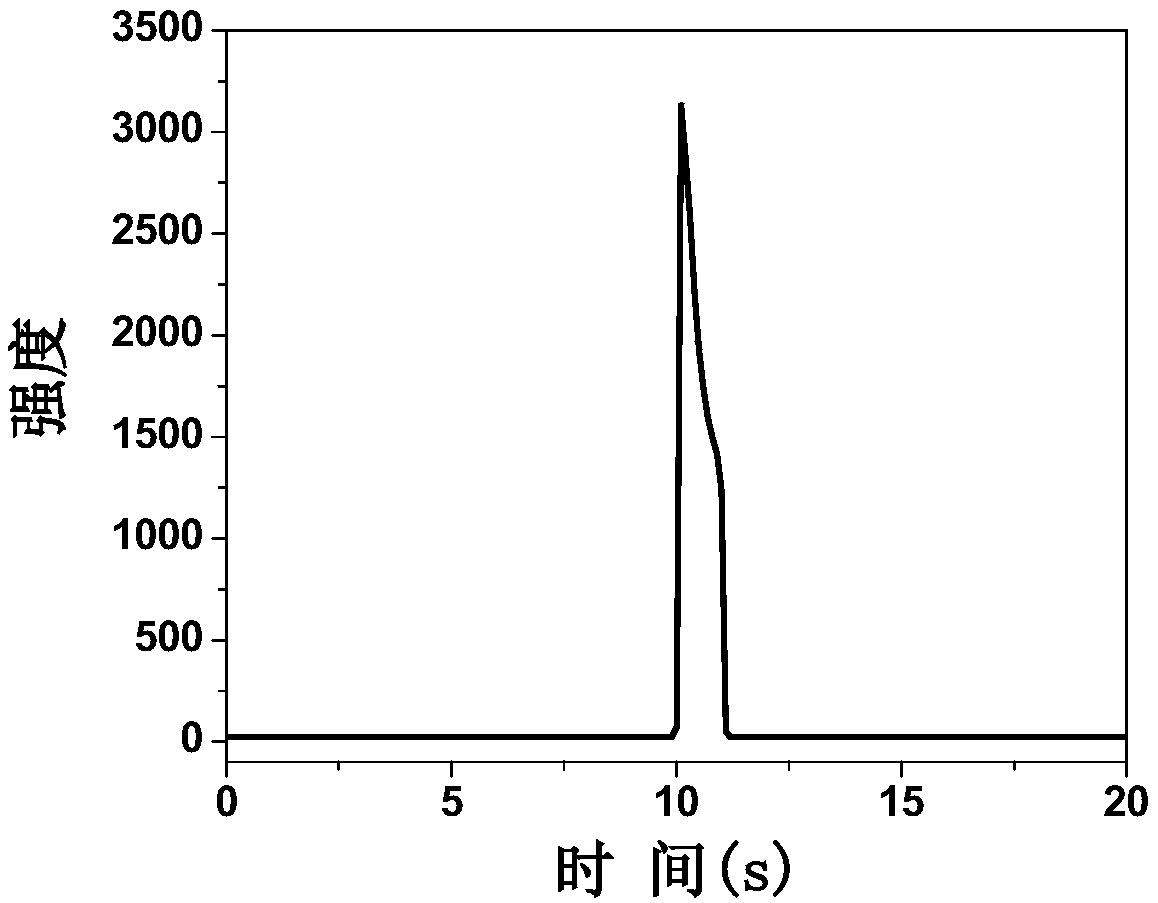Electrochemiluminescence detection method for tumor necrosis factor alpha and kit of electrochemiluminescence detection method
A technology of tumor necrosis factor and electrochemistry, which is applied in the direction of chemiluminescence/bioluminescence, electrochemical variables of materials, and analysis by making materials undergo chemical reactions, etc. It can solve the problems of less research, low ECL intensity, and unclear luminescence mechanism, etc. question
- Summary
- Abstract
- Description
- Claims
- Application Information
AI Technical Summary
Problems solved by technology
Method used
Image
Examples
Embodiment 1
[0048] Add 0.6 mL of 0.5 mol / L NaOH and 0.4 mL of 20 mg / mL chloroauric acid solution into 4 mL of 0.08 mol / L N-acetyl-L-cysteine solution, mix well and place at 37 °C for constant temperature Incubate for 3 hours in the sink. After the reaction was completed, the reaction solution was dialyzed and purified for 24 h with a dialysis bag with a molecular weight of 3000 to obtain the purified N-acetyl-L-cysteine-protected gold nanocluster solution, which was stored in a refrigerator at 4 °C in the dark.
Embodiment 2
[0050] Glassy carbon electrodes with a diameter of 3 mm were coated with 1.0 μm, 0.3 μm, 0.05 μm Al 2 o 3 The powder is polished and polished in turn until it reaches a smooth mirror surface, and then put in HNO in turn 3 solution, absolute ethanol, ultrasonic cleaning in deionized water for 3 minutes, N 2 blow dry. Take 5 μL of the N-acetyl-L-cysteine-protected gold nanocluster solution prepared in Example 1 and drop it on the surface of the treated glassy carbon electrode, dry it at room temperature, and further soak the electrode in 0.1 mol / L React in sodium borohydride solution for 5 minutes to obtain gold nanocluster probe modified electrode. Insert the above electrodes into 0.1 mol / L pH 7.4 phosphate buffer solution containing 0.1 mol / L potassium persulfate and 0.1 mol / L KCl. The step pulse method was adopted, the initial potential was 0 V, the pulse time was 10 s, the end potential was -2 V, and the pulse time was 1 s. The high voltage of the photomultiplier tube w...
Embodiment 3
[0052] Glassy carbon electrodes with a diameter of 3 mm were coated with 1.0 μm, 0.3 μm, 0.05 μm Al 2 o 3 The powder is polished and polished in turn until it reaches a smooth mirror surface, and then put in HNO in turn 3 solution, absolute ethanol, ultrasonic cleaning in deionized water for 3 minutes, N 2 blow dry. Take 5 μL of the N-acetyl-L-cysteine-protected gold nanocluster solution prepared in Example 1 and drop it on the surface of the treated glassy carbon electrode, dry it at room temperature, and further soak the electrode in 0.1 mol / L react in sodium borohydride solution for 5 minutes to obtain a gold nanocluster probe modified glassy carbon electrode. A three-electrode system was adopted, with gold nanocluster probe-modified glassy carbon electrode as the working electrode, platinum wire electrode as the counter electrode, and Ag / AgCl as the reference electrode. 4 -H 2 SO 4 (1:1 V / V) solution, manganese dioxide was electrodeposited, the deposition potential w...
PUM
 Login to View More
Login to View More Abstract
Description
Claims
Application Information
 Login to View More
Login to View More - R&D
- Intellectual Property
- Life Sciences
- Materials
- Tech Scout
- Unparalleled Data Quality
- Higher Quality Content
- 60% Fewer Hallucinations
Browse by: Latest US Patents, China's latest patents, Technical Efficacy Thesaurus, Application Domain, Technology Topic, Popular Technical Reports.
© 2025 PatSnap. All rights reserved.Legal|Privacy policy|Modern Slavery Act Transparency Statement|Sitemap|About US| Contact US: help@patsnap.com



